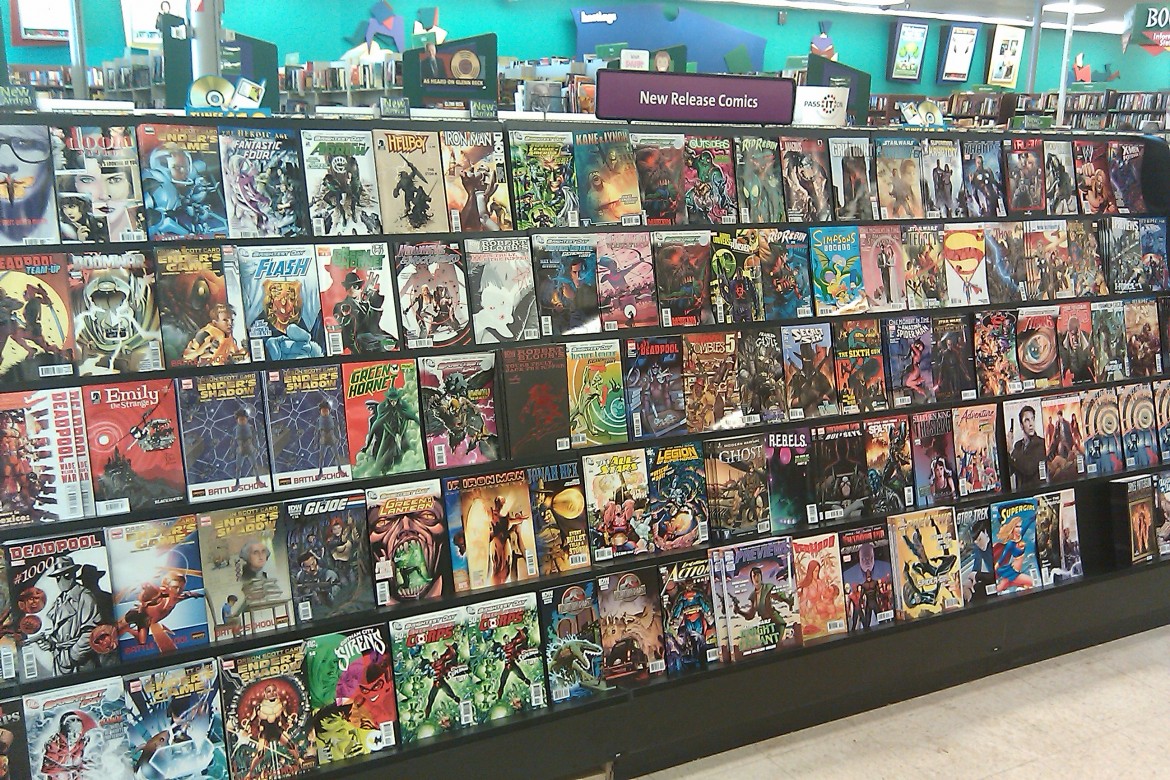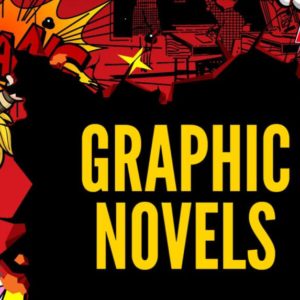
The Modern Resurgence of Comic Books Today
Comic books in the United States have a long and storied history, beginning in 1842 with The Adventures of Obadiah Oldbuck. In 1938 the introduction of Jerry Siegel and Joe Shuster’s Superman launched comic books as we think of them today.
In the years that followed, readers have eagerly anticipated the adventures of Batman, Spider-Man, the X-Men, The Fantastic Four, Captain America, Hulk, and dozens of other superheroes and their evil counterparts. Comic book genres eventually branched out to include science fiction and fantasy, horror, pulp, and manga. These comic books were mostly read by, and marketed to, young boys.

Unless you’ve been hiding under a rock for the past fifteen years or so, you’ve likely seen the proliferation of comic book superhero movies coming out of Hollywood. Beginning with Sam Raimi’s Spider-Man in 2002, everyone from Wonder Woman and Batman to Ant-Man and Deadpool has had their own movies, and they’ve almost all been runaway commercial successes. A few of them have even garnered critical acclaim.
In the wake of these smash hits have come the usual deluge of merchandise””everything from t-shirts, toys, and lunchboxes to accessories for your office. You name it, and someone somewhere has probably slapped an iconic superhero logo on it. And who would blame them?
Comic- and superhero-related merchandise boasts yearly sales that can reach into the billions of dollars for one comic series alone.
The Fall and Rise
With all the commercial success of blockbusters and their merchandise, you would expect comic book sales to have gained equally, right? Unfortunately, that isn’t what happened. In fact, comic book sales have declined to almost record lows each year since 1997.
Then 2012 happened. Possibly boosted by the release of The Avengers, Marvel’s highest grossing film to date, a rebooted Spider-Man and the conclusion to Christopher Nolan’s Dark Knight trilogy, comic book sales began to rise.

Keep in mind, sales of comic books are measured by how many comic books retailers purchase from distributors, rather than by individual purchases by readers.
Following 2012, sales have continued to grow, from $715 million to $1.03 billion in 2016. That is more than a 40 percent increase over five years. Comic sales were so high that in June of 2016 it is estimated that 8.5 million copies of comics were sold, a threshold that hasn’t been reached since December of 1997 when comic sales reached 9 million copies.
Film franchises haven’t been the only force behind the growth of comic books. Last year, the two comic powerhouses had major releases. Marvel released Civil War II No. 1 to critical acclaim, while DC had success with Batman No. 1. Both highly-anticipated releases are sure to have influenced the high sales, but other forces helped pave the way for such growth.
Accessibility
Digital Library
In recent years, the way we consume media has been changing. Thanks to the rise of smartphones and tablets, more digital media is being consumed. With this, the accessibility of comics has risen. Digital sales of comic books have increased alongside paperback, growing from $25 million in 2011 to $90 million in 2016””an increase of 260 percent over 5 years.
This sort of growth has seen a multitude of websites and apps offering free or monthly subscriptions to access their libraries. The digital library can provide new and out-of-print comics that can be immediately consumed. Amazon noticed this trend and jumped at the opportunity to purchase ComiXology, which hosts over 100,000 comic books, graphic novels, and manga.
Media giants aren’t the only ones taking advantage of the digital medium. Thanks to the cost-effective nature of online publishing, more independent artists have been releasing their work online, and then releasing a limited number of print copies. Collaboration between artists has never been easier, and this has led to an explosion of new and exciting superheroes.
Brick and Mortar
Is it the smell of ink on paper? Maybe it is the feel of turning a page or perhaps just a hipster trend that has leaked into the comic world. Whatever the reason, digital consumption has not stopped our thirst for print media.
Coincidentally, brick-and-mortar comic stores are up four percent in 2013, with no signs of slowing down. Comic book stores are popping up everywhere. The stores use flashy posters to showcase the latest releases in the windows, tempting the sidewalk shoppers to come in.
The increase in independent comic stores comes with an increase in visibility and availability, directly translating to sales.
Wider Audience
The increase of the digital release of comics by independent artists has led to the development of more characters. There has been a movement to bring more diversity to heroes and villains to appeal to a wider demographic.
To capitalize on the appeal, best-selling author and activist Ta-Nehisi Coates has even turned his sites to appeal to a larger demographic. Following his award-winning book Between the World and Me, Coates decided to write an 11-issue run of Black Panther, the first black, mainstream hero who debuted in 1966. The first issue of Coates’ run sold a whopping 253,000 copies, making it the best-selling comic of the year at the time.
More than just revitalizing old characters, new heroes have been taking shape to appeal to broader audiences. The Unbeatable Squirrel Girl tells the story of a college student who communicates with squirrels and fights crime using non-violent means. There have been more options available that are designed to attract women, like the Ms. Marvel, whose non-hero name is Kamala Khan, a Muslim Pakistani-American teenage girl and Marvel’s first Muslim character.
Summary
Comic books have always had a cult following, solidifying their spot in pop culture and being synonymous with “nerd culture.”
Over the years, we have seen comic book popularity bolstered by Hollywood movies and merchandise sales that dwarf the budget of some of the smaller states in the U.S.
Digital offerings have fulfilled our need for instant gratification, and print publication has satisfied the collector in us as diversity among characters and readers continues to grow.
This resurgence in sales appears like it will continue in 2017 and beyond.
Images
https://www.flickr.com/photos/aloha75/8015843393
https://c1.staticflickr.com/1/95/238463006_a635fc94c3.jpg









